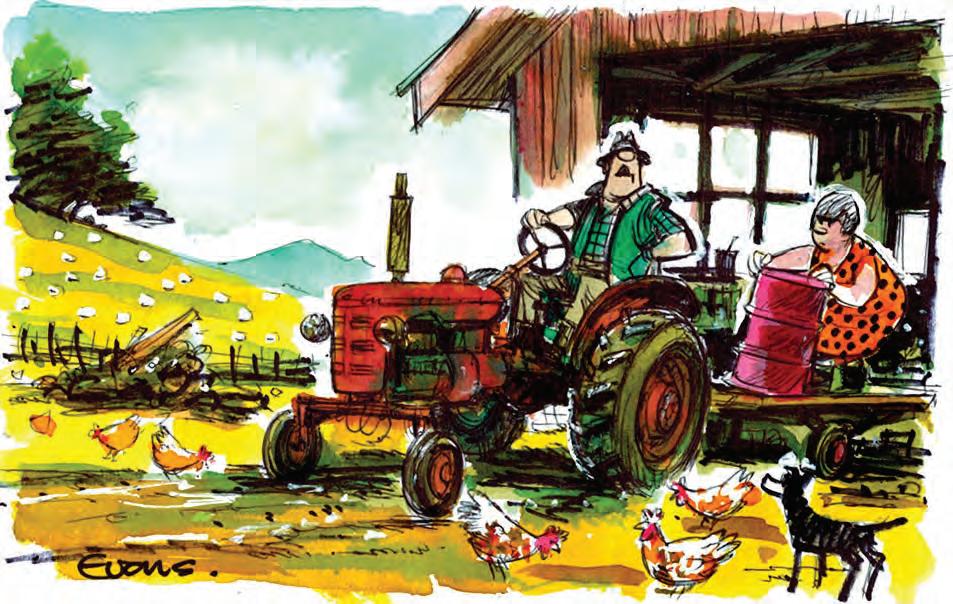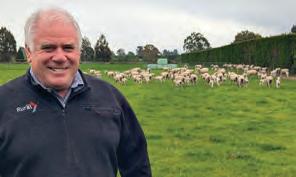
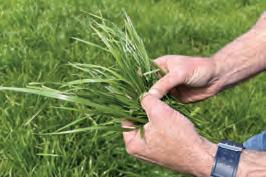
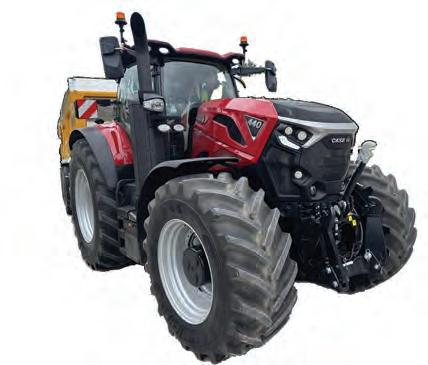




THE FORMER chair of the Bay of Plenty Regional Council and farmer, Doug Leeder, says rural community’s biggest fear right now is the lack of long-term certainty over environmental regulations.
His comments follow what amounts to an edict from the present Government for regional councils and unitary authorities to effectively stop approving consents or setting rules that may not align with the new Resource Management Act (RMA), the details of which will be revealed later this year.
As present opinion polls show, there is a possibility of a change of
government in a year’s time and Leeder says there is every chance that a new government could reverse some of the changes. He says you have a situation where a government can come in and get people on board with their changes and then three years later the process can start all over again.
“That is the absolutely last thing that the rural community and primary industry needs,” he told Rural News.
“They want some form of certainty, and we cannot continue to have chop and change because, should it happen, it will kill the confidence of rural NZ.
“Let’s be clear, the primary industry – which includes horticulture, beef and lamb, dairy and forestry – are keeping
JUST SIXTEEN hours ago this water on Margaret Brown’s farm in the Manawatu had contained high levels of nitrate but thanks to the intervention of a woodchip bioreactor it’s now virtually free of this and will not pollute the nearby Haynes Creek. Massey University, the Manawatu Catchment Collective and local farmers are busy trialling new ways to reduce nitrate levels on their land. This includes using a woodchip bioreactor which can filter out most of the nitrate in the water – making for healthier and unpolluted waterways. More on pages 6-7.
the lights on in our country in terms of their earnings and contribution to the GDP,” he says.
Leeder says there needs to be a bipartisan approach.
In terms of the present Government’s edict to regional councils and unitary authorities, Leeder says they should comply with that request. He says while technically councils could stick with the present law until a new one comes into effect, pragmatism should prevail. He says if councils ignored the government edict, they could incur huge unnecessary costs and waste peoples’ time for no real benefit.
Earlier this month, Parliamentary
Commissioner for the Environment
Simon Upton made a similar call, seeking cross-party consensus on the country’s overarching environmental goals.
In his annual report, Upton says that over the last year, he travelled widely in regional New Zealand listening to what farmers and rural communities had to say about his report on land-use change, Going with the Grain.
“A common message I received was that our lurching, stop-start approach to policy development is not just a significant barrier to making progress on environmental outcomes, but a real turn-off for many people who want to get on with improving things.”
Upton says solutions to environ-
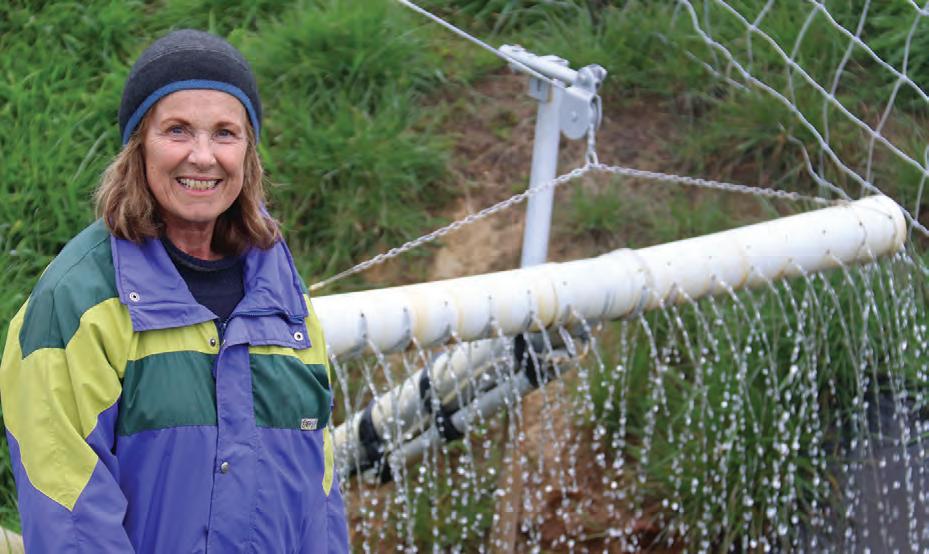
mental challenges will never be available within the three year term of a government and if every government feels compelled to start from scratch, even making a start is “well-nigh impossible”.
“This is why broad, cross-party consensus on our overarching environmental goals and wide support for our environmental management system is so important.
“Building an enduring consensus is no easy task – but there are at least three points that I hope all politicians should be able to agree on if we are to have any chance of at least maintaining, and hopefully improving, our environment.”
Meanwhile, Leeder says he’s heard commentary from several government ministers about the role and value of regional councils as delivery agents for environmental rules and regulations. He says the pushback against them has come from landowners, the primary sector and others affected by the administration of the rules.
He concedes there has been a lack of consistency in the application of rules with some councils taking a harder line than a neighbouring one – a factor causing angst with farmers.
“There can be a situation where a farm is split and the part on one side of the road will have to comply with different rules that part on the other side,” he says.
Leeder says while there may be catchment differences, it seems the only way to overcome such inconsistences is to have more national environmental standards set by government.

Proven and trusted by farmers for 20 years, Ultrastrike® provides establishing brassica crops superior insect protection compared to alternative products - PLUS protection against seedling diseases AND a start-up supply of molybdenum.
HEAD OFFICE
Lower Ground Floor, 29 Northcroft Street, Takapuna, Auckland 0622
Phone: 09-307 0399
Fax: 09-307 0122
POSTAL ADDRESS
PO Box 331100, Takapuna, Auckland 0740
Published by: Rural News Group
Printed by: Inkwise NZ Ltd
CONTACTS
Editorial: editor@ruralnews.co.nz
Advertising material: beckyw@ruralnews.co.nz
Rural News online: www.ruralnews.co.nz
Subscriptions: subsrndn@ruralnews.co.nz
SUDESH KISSUN sudeshk@ruralnews.co.nz
A DROP in methane targets announced by the Government this month has pleased farmers but there are concerns that without cross-party support, the targets would change once a Labourled Government is voted into office.
Groundswell co-founder Bryce McKenzie says it’s great to see methane targets “now aligning more with the science”.
“But if it were to be based on not adding to global warming, then of course the target should be zero,” he told Rural News
He adds that it’s always a worry that a new Government will change everything “because of ideology rather than science”.
Beef + Lamb NZ chair Kate Acland says the revised targets better reflect the science around the different warming impact of short- and longlived gases.
The Coalition Government has set
a new range of 14–24% below 2017 levels by 2050, reflecting the findings of the independent Methane Science Review released in 2024. The previous target, set by Labour, was 24-47%.
Acland told Rural News that meeting the 24% target will be challenging for the red meat sector.
“The revised target doesn’t mean we’re getting let off the hook: meeting the upper end of the target will be really challenging.”
Acland adds farmer groups including B+LNZ have been talking to politicians across the spectrum so everyone to understand the science and science-based solutions to reducing emissions.
“The revised targets better reflect the science around the different warming impact of short- and longlived gases. Methane should only be asked to do what is expected of other gases, which is to achieve no additional warming. New Zealand’s red meat is already among the most climateefficient in the world, thanks to our
PETER BURKE peterb@ruralnews.co.nz
TRIBUTES HAVE flowed following the death of former Prime Minister and political and business leader, Jim Bolger. He was 90.
Prime Minister Chistopher Luxon says Bolger was a towering figure in NZ political life, Labour leader Chris Hipkins said that Bolger’s contributions will continue to shape the country for generations to come.
James Brendan Bolger was born to Irish immigrant parents in the Taranaki township of Opunake and later went farming in the Waikato.
In 1972 he was first elected to parliament as the MP for King Country - a seat he held until his

for Cattle Troughs
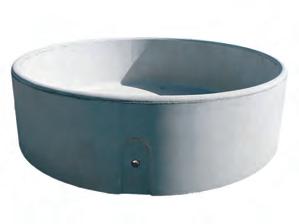
pasture-based farming systems.”
Labour’s agriculture spokesperson Jo Luxton isn’t happy with the revised targets but concedes a Labour-led government wouldn’t go back to the old target.
“We didn’t always get it right in our last term of Government – we certainly wouldn’t go back to that which is why we’ve indicated we would be open to bipartisan discussions to ensure consistency long term,” she told Rural News
“Christopher Luxon rejected Labour’s request – which would have made parliamentary majority – to allow for infighting from Act and New Zealand First instead. We need to see the advice the Government based this decision on.
“By lowering our climate target, the Government is giving up on the export opportunities that come from leading the world on sustainable production.
“Instead of backing our strengths, they’re moving the goal posts. I’m disappointed this short-term thinking
retirement in 1998. Under successive Muldoon governments he served in various roles including agriculture, fisheries, labour and immigration.
In 1990 at the age of 55 the sheep and beef farmer won a landslide election as Prime Minister and set about introducing a series of major reforms. He later became NZ ambassador to the US and held other public roles.
Along with his wife Joan, Bolger was proud of his strong Irish catholic roots and visited Ireland many times, A republican at heart he abolished the UK honours system and introduced a NZ system of honours.
Bolger was a humble family man, politically astute and intelligent who gave a lifetime of service to his country.



will weaken New Zealand’s climate targets - it’s bad news for Kiwi exporters and for New Zealand’s future.”
Meat processors describe the revised targets as sensible and more achievable.
Meat Industry Association chair Nathan Guy says the new targets are grounded in science and strike the right balance between lowering emissions and maintaining food production.
“Importantly, they give our international customers confidence that New Zealand remains committed to doing its part on climate change.”
The Government has also ruled out a tax on agricultural methane emissions.
Agriculture Minister Todd McClay says the Government approach is clear. “Technology and partnership, not taxes, will deliver the reductions that we need. By investing in new tools and giving farmers practical support, we can cut emissions without cutting production or profitability.”



Mount
•Detach to Clean
•Compact/Robust


MARK DANIEL markd@ruralnews.co.nz
THE SECOND event in the Silver Fern Farms ‘Pasture to Plate Roadshow’ landed in Feilding last week, headed by chair and King Country farmer, Anna Nelson, and chief executive Dan Boulton.
Both had returned the previous weekend from a tour of customers in North America, UK, and Europe, culminating in flying the SFF flag at the Anuga Food and Beverage Trade Fair, held in Cologne, Germany and attracting eight thousand companies from 110 countries.
Nelson noted that customers were praising the quality of the products heading to the Northern Hemisphere, wanted more, although suggesting that lamb was getting too expensive as a
customer choice in restaurants.
“In the North American market there has been a notable rise in interest in MAHA (Make America Healthy Again) with consumers focusing on quality protein from grass-fed beef to the point that labelling is now containing information on grammes of protein available,” says Nelson.
Acknowledging the past two years had been tough, she thanked co-operative members for their commitment and loyalty, alongside the need to look to the future, both in terms of their individual businesses and the wider agricultural community.
Boulton confirmed the market was positive and holding, while castigating those in the industry, who were predicting a difficult future, while noting that SFF initiatives were centred around a laser-like focus on
operational agility, costs, and core efficiencies.
Digging deeper, Boulton noted, “nine months into the current financial year, revenues are up by $300m and we have taken around $60m out of our costs, on top of the $80m we removed in 2025. This has built resilience in the co-operative, but we also see thirdparty procurement agents and sales yards doing well on the rising prices but adding no value to our operation.”
Looking at the broader picture, he confirmed that overseas buyers were worried about continuity of supply, wanted more, and had sometimes been let own.
Boulton suggested that relying on high prices for the next couple of years did nothing for resilience.
“Taking high prices now, then finding the market falls is the old way

of doing business. We must think ahead, build enduring relationships with buyers, who appear to be open to longer term contracts, and support those who support us is the way forward. This might mean letting occasional buyers to fall by the way,” he said.
In North America, demand remained strong, driven by reduced local production, although subject to some volatility and changing trade conditions. Boulton confirmed that the original 10% import tariff had been passed on to buyers, but the additional 5% was challenging, particularly so, as Australia had negotiated a 10% deal.
Looking at sheep meat, Chinese demand was waning, while Europe
and the UK was showing some growth. Boulton reinforced this, with an announcement that SFF had negotiated a five-year deal with UK supermarket giant Sainsbury’s who committed to taking lamb from NZ Farm Assured Programmes (NZFAP plus) farms.
Describing the company as the leader in planet-friendly retailing, the business currently operates 1475 stores in the UK, but they wanted a guaranteed supply, while at the same time encouraging farmer resilience by covering the cost of the NZFAP plus scheme. Of course, their commitment would need to be matched by quantifiable data to continue to command premium retail prices.

PETER BURKE
RELATIONSHIPS ARE
key to opening new trading opportunities and dealing with some of the rules that countries impose that impede the free flow of trade.
That’s the view of Diana Reaich who heads up Ministry for Primary Industries (MPI) trade and international group. She spent more than 20 years at Ministry for Foreign Affairs and Trade (MFAT) with roles in foreign and trade policy.
Prior to joining MPI a year ago, she was NZ’s Ambassador in Brussels where she played a significant role in the negotiating of FTAs with the EU.
She says that while MFAT takes the lead role on FTAs in terms of the
overall document, it’s the behind-the-scenes work in relation to the primary sector where MPI is heavily involved.
“With free trade agreements, MFAT operates at the high level in relation to tariffs and other benefits, while we get into the nitty gritty of what you actually need to do to send a consignment of cheese or meat to a particular market,” she says.
In this regard the MPI team lead certain parts or chapters of an FTA such as sanitary or phytosanitary and provide detailed technical input into other parts of an agreement. To do this MPI has a large team of experts based in NZ but also has 15 staff located at our embassies and high commissions in key markets. It has four based
ONE OF the biggest impediments to NZ exports are things known as non-tariff trade barriers (NTBs) which deprive our country of around $10 billion annually.
NTBs are defined as any obstacle to international trade that is not an import or export duty, and may take the form of import quotas, subsidies, customs delays, technical barriers, or other systems preventing or impeding trade. They can apply irrespective of whether NZ has an FTA with any given country. Currently NZ is battling 194 of these and a huge multi agency effort is going into reducing these.
Diana Reaich says NTBs are part of MPI’s day to day business.
“We do a lot of the heavy lifting
in China, two in Brussels and one each in London, Jakarta, Washington, Geneva, Rome, Dubai, New Delhi, Hanoi and Tokyo.
Reaich says the food and fibre sector delivers around $60 billion in export revenue and contributes 82.5% of NZ’s goods exported. To gain market access for primary exports has never been and never will be an easy task – especially nowadays with moves away from rules-based trade and overall global uncertainty.
She says her team works hard to understand what NZ exporters need to get their products into market and to also to identify the potential barriers they face.
She says it’s then a case of the MPI team working with the
about NTBs. This covers things such as audit requirements, complex certification and onerous labelling requirements, and so we work to understand those barriers and provide the technical information to our partners to enable us to break through then. We do all the technical work and then MFAT will get involved from a diplomatic angle,” she says.
Reaich says one of the things she’s learned since coming to MPI is just how much of the heavy lifting it does. She says their work includes getting trading partners to understand our traceability, food safety and verification systems and supporting more rapid border clearances of products.

regulators in overseas markets to make sure they understand our unique production systems and how we can meet their standards. Sometimes this is pointing out the similarity of standards, or simply meeting the specific requirements of individual markets.
To this end, MPI hosts delegations of officials and primary sector representatives from other countries so they can see our farm practices and meet our farmers, processors and others in our primary sector. At the same time, MPI staff make reciprocal visits overseas and together with ‘in market staff’ work to develop trust, knowledge and the requirements of NZ’s customers.
Reaich says relationships are critical
A top priority for the MPI team at present is acquiring an FTA with India, which Reaich describes as a tricky, complicated and massive market and is many markets within a market.
“So, in our case, as well as having a representative there, we are sending people to India all the time to find out who are right people and relevant agencies that we need to talk to. There is no substitute for sending good people and talking and listening to build good relationships,” she says.
Finally, Reaich says one thing she’s realised since coming into her role at MPI is the dedication of her staff and that their work opens up new opportunities for our exporters and makes a real difference to the NZ economy.
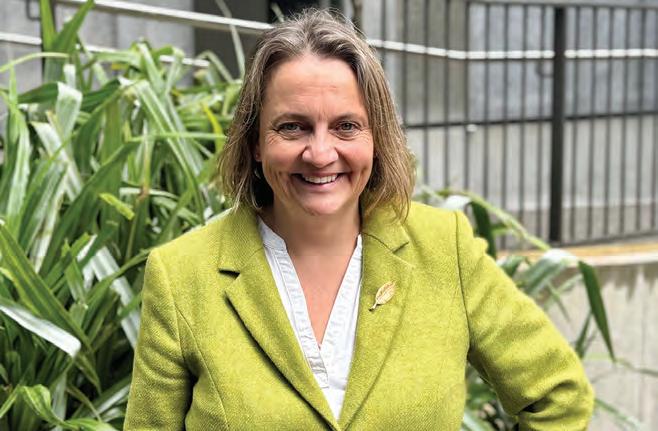
to everything MPI does. “And it’s a cool part of what we do, explaining the NZ systems, because it’s important that those global standards are
developed in a way that which aligns with [what] farming looks like in NZ.
Our farming system is pasture based, unlike many other parts of the
world, so our role is not only spreading the knowledge about this, but also influencing those global standards to meet our needs,” she says.

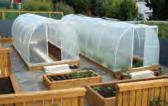





Claims that farmers are polluters of waterways and aquifers and 'don't care' still ring out from environmental groups and individuals. The phrase 'dirty dairying' continues to surface from time to time. But as reporter Peter Burke points out, quite the opposite is the case. He says, quietly and behind the scenes, farmers are embracing new ideas and technologies to make their farms sustainable, resilient, environmentally friendly and profitable.
A GOOD example of the good things that are happening is near the small rural settlement
of Kimbolton in the Manawatu.
It’s here that a significant research
PROFESSOR RANVIR Singh says each site is different and a huge amount of co-learnings and work went into planning the project on the Brown’s property.
From the gully there is a constant flow of water into a drain and in the middle of this has been built the woodchip bioreactor, complete with an array of sensors to measure the level of nitrate in the water before it goes though the wood chips and when it comes out the other end. The woodchips, which contain carbon, denitrify the water and it takes about 16 hours for the water to go from one end of the
project is taking place to reduce the amount of nitrogen on a farm going into a local steam
bioreactor to the other.
As well as fencing off the bioreactor, the Browns, in conjunction with the catchment collective, have carried out extensive riparian planting further down the drain to improve water quality and biodiversity.
The Browns did most of the earthworks associated with constructing the bioreactor. They also run a contracting business and had the necessary heavy machinery. A huge hole was dug, into which the wood chips were placed.
According to Fiona Burke, the
- Haynes Creek - and into other connecting waterways.
Scientists from
actual woodchips are quite expensive as they must be cut to a specific size and have the bark removed. In this trial the area around the bioreactor has been fenced off to protect the measuring instruments, but in normal circumstances it would just be a part of the paddock and stock could graze on it. Professor Singh says the bioreactor contains about 300 cubic metres of wood chips.
“We have been monitoring this site for two years; less last year because it was a very dry season. But this year we have got good data, and we have been seeing a huge reduction in the nitrate
Massey University School of Agriculture and Environment, local farmers and
outflow. But we are still completing our analysis and will build up good data sets that we will be able to share with farmers,” he says.
He says the challenge is that this was only a three-year project and funding will have run out next year. He says Massey is hoping that the catchment group can get additional funding so that performance monitoring and lessons from the trial can continue for longer.
He believes the trial has been successful so far and says a very positive outcome has been collaborating with farmers and ensuring that what is being done is practical.

the Manawatu River Collective have been working collaboratively on a pilot demonstration of a woodchip bioreactor, project which is already showing that nitrogen levels can be significantly reduced in drain flows from farming landscapes.
A woodchip bioreactor has been built on the 300ha farm of Dr Margaret and Richard Brown on which they run
sheep and cattle but also have extensive cropping, producing winter and summer wheat, peas, barley and even Brussel sprouts. The soil on the land is heavy silt clay loam and early testing showed that nitrate levels in one of the drains on the property was high, and there are number of drains on the property which flow into the local stream, known as Haynes

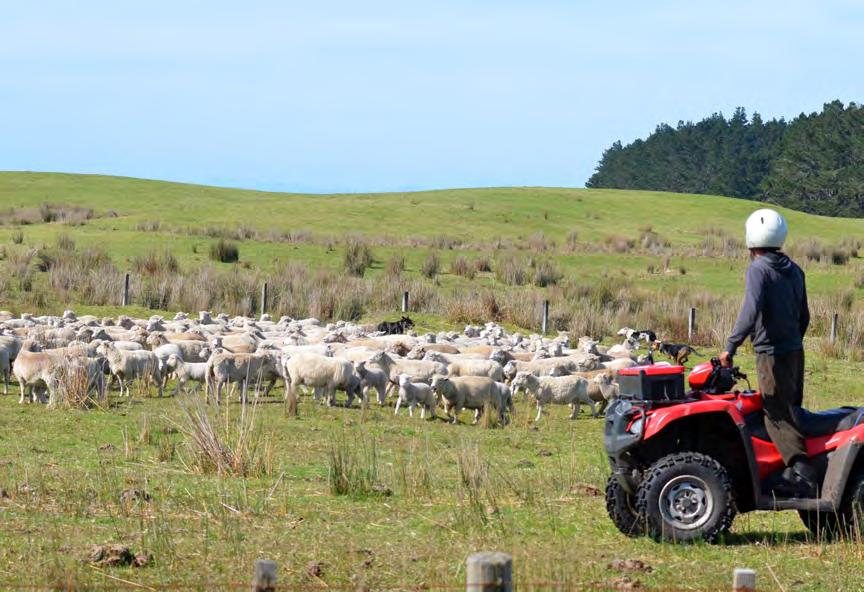
Creek. The Browns belong to the Haynes Creek Catchment group – one of 15 such groups in the greater Manawatu region – as part of the Manawatu River Catchment Collective.
Margaret works off farm as a social scientist with AgResearch and admits to having an abiding interest in environmental science. It was at a meeting of the Haynes Creek Catchment group, which has a membership of about 55 landowners, that the idea of installing a wood chip bioreactor on one of the farms in the group was mooted as part of the Catchment Solutions project.
“We were one of four farmers who put their hands up and, in the end,
we were selected for the pilot trial in Haynes Creek,” says Margaret Brown.
She says they had been sampling water on their farm for about eight years and knew that they, like others in their catchment, had similar problems with high elevated nitrate levels in drain waters and were looking for ways to mitigate this.
“At a personal level we were keen to find out what could be done, but we were also keen to share the findings with other farmers,” she says.
The site chosen for the woodchip bioreactor was a 22ha block of land, or mini catchment or small gully where the land has been tile drained and flows into a small
WHILE THE trial so far has produced excellent results in terms of reducing nitrate levels, this must be weighed against the cost of installing a woodchip bioreactor, which in this case is about $10,000 to service just 22 hectares.
Margaret Brown says the cost is high and may not be practical. However, she says they are waiting to get more data from the trial and also see what the new regulations may look like – and that will guide them in terms of future options.
Fiona Burke says regardless of the final outcome, the bioreactor trial at Haynes Creek has produced many benefits. She is the co-ordinator for 15 catchment groups with a membership of nearly 500 farmers in the Manawatu. She sets up meetings, organises field days and brings in experts to meet with farmers and exchange ideas.
Burke says her role is to run some social functions to bring together farmers and their families, many of whom feel quite isolated and have few opportunities to share knowledge and problems and socialise with each other.
“I think this project has been a learning curve from both the farmers’ side and Massey. The scientists have learned to slow down and explain what they are doing in ways that farmers can understand it. The good bit is they have listened to farmers and designed things that work in their environment,” she says.
She says farmers don’t want to be lectured to, they just want to know what’s wrong and what to do.
One such farmer is Mark Burke, neighbour of the Browns, and who is long time member of the Haynes Creek Catchment group. He’s been measuring water quality on his farm for several years and using Overseer, so knows his numbers.
He says he’s been following the trial closely and believes the use of a woodchip bioreactor could be of potential benefit to him in the future. Mark Burke says he enjoys being part of the catchment group because it gives him the opportunity to meet with farmer colleagues and share knowledge on how to improve the environment.
“My personal view is I want my farm to be sustainable, resilient, tick the environment boxes and also I want to make money,” he says.
For more information visit https://catchmentsolutions. co.nz/virtual-tours/
drain, which ultimately flows into Haynes Creek.
Throughout this process, Massey University’s environmental hydrologist, Professor Ranvir Singh, and Manawatu River Catchment Collective co-ordinator, Fiona Burke
were deeply involved.
Fiona Burke says her objective was to get farmers involved and have ownership of the project. She says now a lot of regulations are coming in and there appears to be few options available to fix some of their problems.
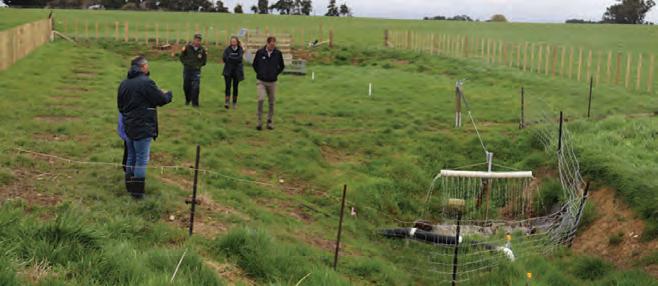

It’s time to change our approach to parasite management in livestock.
We’ve all heard the talk around the increase in drench resistant worms. Studies have shown they’re a significant cost to New Zealand farms, averaging between
lamb due to reduced growth rates 1,2,3 That’s why we need to change our approach to parasite management through testing, strategic drenching, grazing management and genetic solutions. Change starts now with a conversation. Talk to your vet or visit ChangeItUp.nz









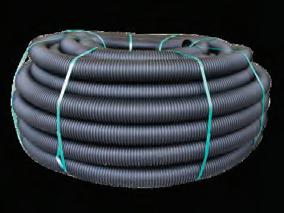





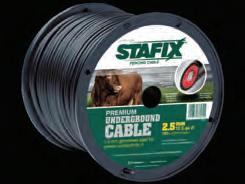




A&P Show.
THE ROYAL A&P Show of New Zealand, hosted by the Canterbury A&P Association, is back next month, bigger and better after the uncertainty of last year.
It is the first time since 2010 that the Canterbury show has been granted Royal Show status under the auspices of the Royal Agricultural Society of New Zealand. Canterbury A&P Association (CAPA) show president, Brent Chamberlain says there is a lot of prestige for exhibitors in winning at a Royal Show and it helps cement its place as the country’s premier
With entries now closed for many key classes, Chamberlain says they have 380 dairy cattle entries - a “huge” increase, 267 beef cattle entrees, which is also well up on previous years, and over 700 sheep entries, also an increase.
“Our livestock entries are very pleasing and I think that’s a direct result of being a Royal Show,” he told Rural News
The resurgence follows a rocky 2024 when the then Canterbury A&P board cited financial pressures in a shock announcement that there would be no public show that year. Pressure from the general committee
and an offer from Event Hire to be involved saw the board largely replaced and a reduced show take place.
Chamberlain said that the committee and the new board have worked well together and a clear direction for the future is in place.
“We’re already looking at starting to plan for next year’s show before we even get this one done. We’re well organised and harmonious.”
A major change to the timetable is also now locked in.
Traditionally running on the Wednesday, Thursday and Friday of Canterbury’s iconic Cup and Show Week, this

year the entire event will run Thursday Friday and Saturday. It’s a move aimed at giving the general public an extra non-working day to visit in addition to the Friday
“Show Day” which is Canterbury’s statutory anniversary holiday.
The change to the public show dates was implemented last year but many of the livestock
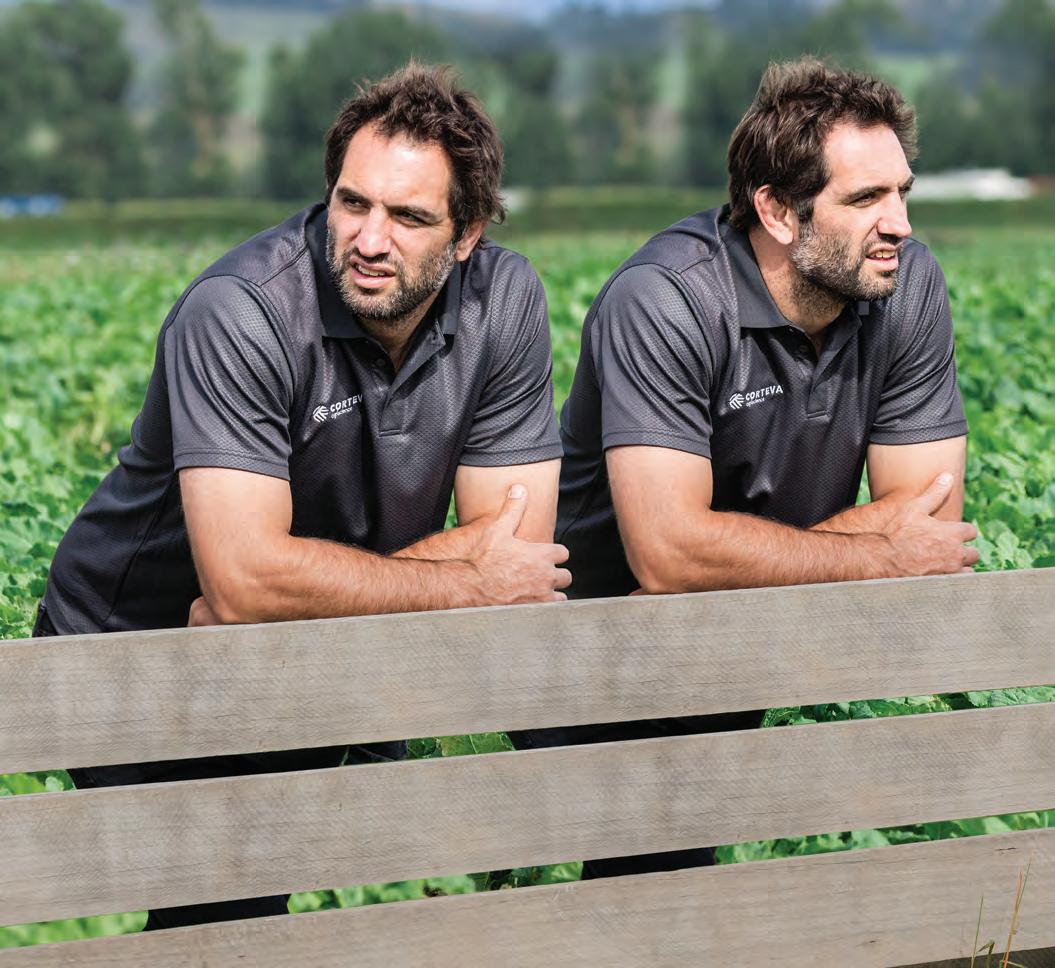
judging and other competition classes still ran to the old timetable, with most of the exhibited livestock packed up and gone by Saturday. With both sides now co-ordinated, Chamberlain expects a good turnout.
The livestock will still be there for the public to see on the Saturday, he says.
TwinGuard from Corteva is the advanced solution for control of damaging pests in forage brassica crops.
TwinGuard protects your brassica crop by combining the proven actives Isoclast® and Jemvelva® to target key pests like nysius, aphids and caterpillars.


With fast and effective control, IPM compatibility and a low environmental impact, TwinGuard is your go-to solution for reliable brassica crop defence.
Talk to your local rep today about how TwinGuard can work for you.

To view the Technical Manual or download the label scan the QR code. Always read the label before use.
ANDREW HOGGARD
FOR CLOSE to eight years now, I have found myself talking about methane quite a lot. This has always resulted in rather high pressure whenever someone told me I should speak up more about how methane is different from CO₂.
So, it was great to finally be part of an announcement that moves forward with far better settings in law.
Firstly, there will be no pricing of agricultural emissions. At a time when people all around the globe are talking about the cost of living and food price inflation, additional taxes on food production seem like a poor idea. Quite frankly, they were a poor idea even before that—the previous government’s own modelling showed that its preferred approach to emissions pricing would have resulted in a 20% reduction in sheep and beef.
The rather strange argument has always been that customers want this, so they will pay more for it.
Technically, yes, if customers want something, they will pay more to get that product; that’s how the law of
supply and demand works. You don’t need government intervention to achieve that if it were truly the case.
What we have seen with the collapse of the Net Zero Banking Alliance and Nestle pulling out of the dairy methane reduction agreement is that the wheels are starting to come off all the virtue signalling around this topic.
The second key element of our announcement is that targets will be slashed by half, to numbers that actually reflect the warming impact of biogenic methane from New Zealand agriculture. Those targets will be reviewed in 2040 to ensure that they are in line with what our trading partners and the rest of the world are doing.
Assuming the world carries on its current trajectory, this would mean that in the next 25 years we would only require an additional 6% reduction in methane emissions. With some of the technologies that are coming online, their use in the dairy industry alone would likely achieve all of that.
The last part of the announcement was about two particular items dear to my heart. Firstly, there is one part of
the Paris Agreement that we all agree with: ensuring that food security is maintained. This means we shouldn’t do less farming; we should try to farm more efficiently. But whatever we do, we must not do so at the cost of food production, which would impact food security around the globe.
Finally, we committed to investigating the use of the split gas approach to all our international obligations. We have this weird situation where in our domestic targets we have agreed to the split gas approach, we have agreed around the fact that methane has a different warming impact and that it doesn’t need to reduce to zero to not create any additional warming. But yet for all our international obligations we have stuck with this all-gas net zero approach. Which in the view of the ACT party is just adding additional costs onto us. When we talk about Paris needing to change or us needing to quit, well this is one of the big things that needs to change with it.
This whole issue of methane emission targets and pricing has been like the sword of Damocles hanging



over New Zealand agriculture for a number of years, along with various freshwater rules. They have created uncertainty and a lack of confidence in the future, this shouldn’t just matter to farmers but to all New Zealanders, because it holds back investments which would otherwise create jobs
and further growth, and saps away at morale.
So, the ACT party is proud to be pushing hard here to fix these issues not just for kiwi farmers but all of regional NZ.
• Andrew Hoggard is an ACT MP and Associate Minister for Agriculture.









WHILE FARMERS are busy and diligently doing their best to deal with unwanted gasses, the opponents of farming – namely the Greens and their mates – are busy polluting the atmosphere with tirades of hot air about what farmers supposedly aren’t doing.
Maybe the Government should introduce a pollution tax on the unsubstantiated rubbish that the green lobby regularly produces – even a cent per word would bring in a good tax take.
So, greenies, take off your blinkers and see in Rural News this week one of hundreds of examples of farmers spending their own money to clean up the problems of nitrate on their properties. It’s time the green lobby got out in the field and saw the effort farmers are making to not only prop up the New Zealand economy, but to make sure that waterways are pollution free for their families to swim and fish in, but also for the city people that come into the countryside.
The reality is that most farmers are savvy enough to realise that to sell their products overseas they need to meet high environmental standards, because that’s what overseas consumers are demanding.
The work of the Manawatu Catchment Collective, in association with Massey University, is an example of how switched-on farmers are.
Scientists bring in hard data and farmers, working in tandem with them, come up with practical, cost-effective solutions that fit their farming systems. There can be no quick fix to this; it will take time and will rely on farm profitability because some of the on-farm solutions such as woodchip bioreactors are not cheap.
What puzzles farmers is that most environmentalists are happy to enjoy the relatively high standard of living that the primary sector provides but then perversely trashes the sector on an ongoing basis.
Sure, some farmers need prodding to get their act together, but the majority are doing their bit for the environment.
HEAD OFFICE POSTAL ADDRESS: PO Box 331100, Takapuna, Auckland 0740
Phone 09-307 0399
PUBLISHER: Brian Hight .......................................... Ph 09 307 0399
GENERAL MANAGER: Adam Fricker ....................................... Ph 021-842 226
EDITOR: Sudesh Kissun ......................................Ph 021-963 177 sudeshk@ruralnews.co.nz
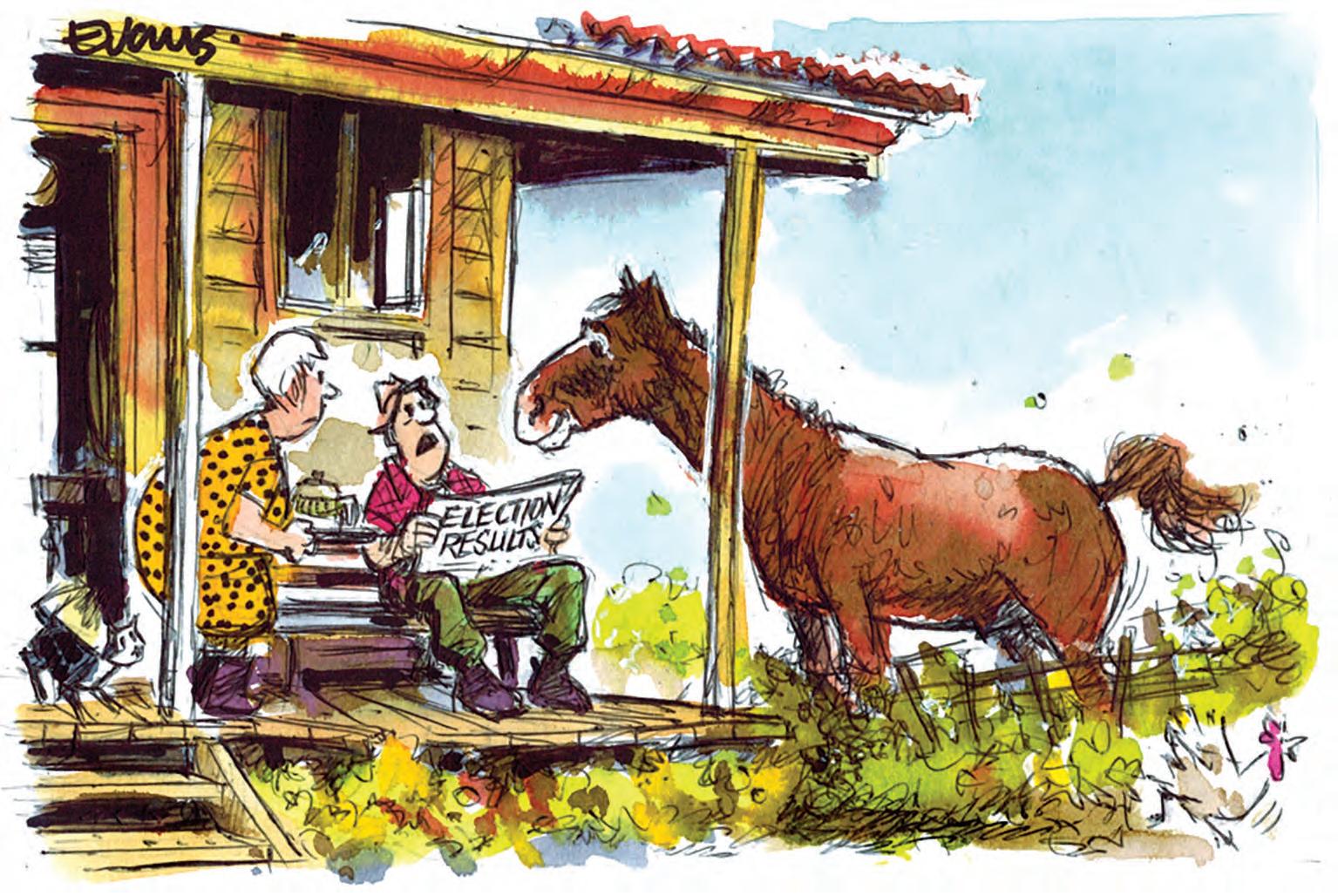
“I think he heard us talking about getting a new mayor.”
WHY DOES it take Treasury so long to turn around its figures on how the economy is tracking? As we waited recently for the Reserve Bank to announce its latest OCR decision, all we knew for sure was that the economy had hit a pothole and GDP had dropped 0.9% - in June. That data was a full 3 months out of date by the time Treasury leisurely released it. Even the Hound’s boss has full accounts for the month prior within a few days of month’s end. Treasury employs 363 people and can’t do any better than 3 months! Are they using an abacus to tally up the nation’s financial run rate? If it’s true that the run rate on the ground is now better than the old data, it would be helpful to know now, not in 3 months’ time.

THE MEDIA luvvies at Stuff, the Spinoff and the Granny Herald are spending more time than ever navel-gazing about why the peasants outside of their cosy little bubble no longer trust them. The Hound reckons it’s not actually that complicated. They think they are ‘challenging worldviews’ and that the backlash is driven by echo chambers. As commentator Ani O’Brien notes, they’ve missed the obvious problem: “the media is the biggest echo chamber of all”. Journalists aren’t being punished for telling the truth, they’re being called out for manufacturing it. They’ve confused journalism with activism and see themselves as moral gatekeepers – not here to inform but to correct. “Until editors stop congratulating themselves for being ‘watchdogs of democracy’ while guarding only one side [the left], trust will keep collapsing.”
ONE OF the most galling aspects of the tariffs whacked on our farm exports to the US is the fact that, now more than ever, US farmers are being propped up by government welfare – a direct result of Trump’s hardline on its trading partners. Particularly China. For decades, Chinese demand underpinned the US Midwest economy, taking roughly a third of US grain production. Then came the Trump trade wars. The response by the US government will be to release billions of dollars in aid for the losses created by its own policies. China has pivoted fast, locking in long-term supply deals with Brazil and expanding its crushing and logistics capacity. The result is a trade shift that will possibly be permanent. American farmers voted overwhelmingly for Trump and its cold comfort to the Hound that they are now finding it’s hitting their bottom line.
Want to share your opinion or gossip with the Hound? Send your emails to: hound@ruralnews.co.nz
THE GREENS have taken the high moral ground on the Palestine issue and been leading political agitators in related protests – and that is to be expected, but the diplomatic efforts and wisdom of Winston Peters in this area should not be overlooked or ignored. The Greens also claim the moral high ground on a lot of social issues, but when it comes to crime, they are missing in action. This old mutt wonders, why? Well, maybe shoplifting and fraud, and certainly not being pro police, are areas where the Greens fade into red – faces that is. The risk in politics of taking the moral high ground is that sooner or later, closet doors get unlocked and untold snippets of unwanted truth emerge. The secret is balance –but for the watermelon party, that is a bridge too far.
EDITOR-AT-LARGE: Peter Burke ...........................Ph 021 224 2184 peterb@ruralnews.co.nz
REPORTERS: Nigel Malthus ........................Ph 021-164 4258 Leo Argent
MACHINERY EDITOR: Mark Daniel ..............................Ph 021 906 723 markd@ruralnews.co.nz
PRODUCTION: Becky Williams ......................Ph 021 100 4381 beckyw@ruralnews.co.nz
AUCKLAND SALES CONTACT: Stephen Pollard .........................Ph 021 963 166 stephenp@ruralnews.co.nz
WAIKATO & WELLINGTON SALES
CONTACT: Lisa Wise .................................. Ph 027 369 9218 lisaw@ruralnews.co.nz
SOUTH ISLAND SALES CONTACT: Kaye Sutherland .......................Ph 021 221 1994 kayes@ruralnews.co.nz
DIGITAL STRATEGIST: Jessica Marshall ..............Ph 021 0232 6446
BIOLOGICALS ARE being promoted as a natural replacement for ‘chemicals’.
They appear under various names, including bioactives, biopesticides, biostimulants and biofertilisers. Bioactive is a catch-all term.
Biopesticides are pest management products derived from natural materials such as animals, plants, microorganisms, and specific minerals.
Biostimulants enhance plant processes and stress tolerance, without providing nutrients.
Biofertilisers enrich the soil and supply nutrients to the plants through enhanced microbial activity.
The industry programme A Lighter Touch (ALT), involving partners HortNZ and MPI, with 13 product groups, and three research providers plus two chemical companies and a merchant company, has been active in investigating the potential for biopesticides in New Zealand. The programme website stresses that biopesticides are most effective as part of an integrated pest management programme.
Google ‘a-lighter-touch. co.nz’ for the latest information.
In contrast, biofertilisers are usually promoted as replacing a certain amount of synthetic fertiliser. They act through mechanisms such as nitrogen fixation and phosphorus solubilisation, making it easier for plants to access these nutrients in the soil. Again, the concept is that the process is natural and will therefore be better.
Unlike for biopesticides, there has been no concerted approach for evaluation in New Zealand, but plenty has been done overseas by the companies that have developed individual products and by universities examining mode of action or comparing products.
The results overall showed a positive response in comparison with no fertiliser but tended to decrease in impact as fertiliser increased. At maximum

Jacqueline Rowarth
yield, no effect of biofertiliser was apparent.
Researchers at North Dakota State University reported in 2023 that 59 of 61 site years of N rate trials with and without the use of biological N fixing products in maize, spring wheat, sugar beet and canola in 10 states within the North Central Region of the U.S. had no yield increase with use of the product over N rate alone. They suggested that “growers should be sceptical” and that the wise grower “needs to test products of interest on their own farm in a replicated manner and search for unbiased data on product performance before using them on whole fields”.
They explained that the energy required by asymbiotic organisms to fix N can come from various sources, such as soil organic matter, and intermediary compounds during the process of plant/animal decay, or the decay or other microorganisms. A rich source of energy also comes from root exudates of growing plants. If N-fixing organisms are active inside living plant tissue, the energy for N-fixation has to come from the plant itself.
This is the main lesson – the energy has to come from somewhere – and it is far easier for the plant to take up fertiliser nitrogen from the soil solution than to supply carbohydrate to bacteria to do the work. The free-living bacteria are already in the soil fixing N – adding more microorganisms will increase competition for the same carbon source.
Professor Derrick Moot, Lincoln University, says “There is no such thing as a Free Lunch”. He has estimated that for Lucerne to fix 150 kg of N requires the equivalent of 1.7 t DM from the host.
This is a 28% unseen cost/penalty in yield. Do the maths… Science advances all the time, and it may be that a breakthrough is made in biological products in future. In the meantime, ALT suggests the questions to ask: What is the active ingredient? If the
biopesticide is described simply as a crude preparation (plant extract or mix of microbes) ask for more details about the active ingredient. If the biopesticide is based on a single micro-organism or pure compound, ask for specific identification. If the answers are vague – beware. Ask how the
product works.
ALT emphasises that if something sounds too good to be true – it usually is. Biopesticides are not stand-alone solutions. They work best when incorporated into an IPM programme utilising a range of management measures.
The parallel statement
about biofertilisers might be that they might have a place on low nutrient status soils in sensitive catchments where nutrient caps are in place… but that might not be where crops should be grown.
In all cases, the North Dakota State University advice is
worth remembering – be sceptical.
• Dr Jacqueline Rowarth, Adjunct Professor Lincoln University, is a farmerelected director of DairyNZ and Ravensdown. She is also a member of the Scientific Council of the World Farmers’ Organisation. jsrowarth@ gmail.com
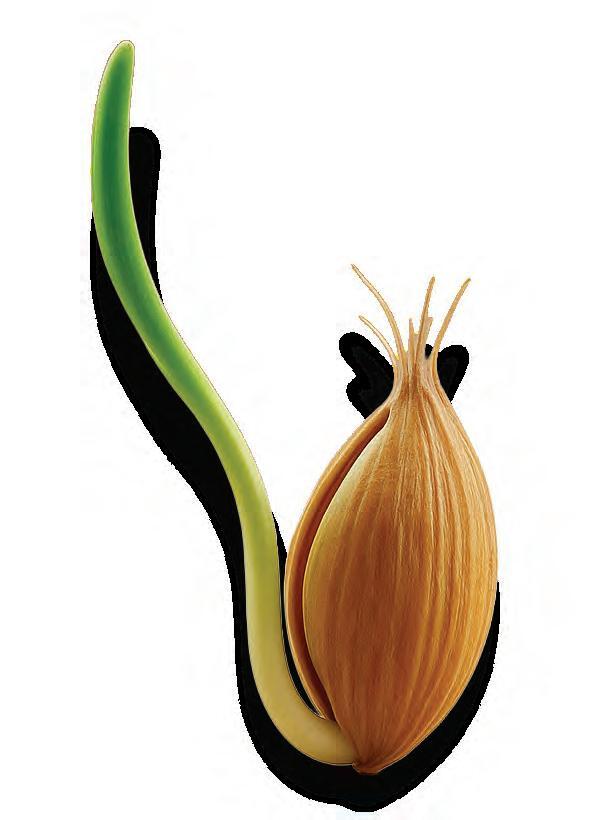
MEET THE Need, a farmer-led charity, says food insecurity in New Zealand is dire, with one in four children now living in a household experiencing food insecurity, according to Ministry of Health data.
It says thousands of Kiwi families are struggling to put food on the table. In the public sector alone, job cuts have reached approximately 10,000 since late 2023. Combined with record living costs and rising rents, many families who have never needed help before are now turning to foodbanks to get by.
Meet the Need general manager Zellara Holden says behind the statistics are real people.
“Parents are out there working two jobs but still unable to afford a full grocery shop, or families are forced to choose between putting petrol in the car and putting food on the table.
“We’re seeing a growing number of Kiwis, most who never imagined they’d need help, finding themselves at foodbanks for the first time. That’s
why our message is simple – it’s not always who you think.”
Meet the Need connects rural producers with foodbanks and social supermarkets around the country, turning donations of mince and milk into nutritious meals for families who need them most. Every animal donated by a farmer is processed and distributed as premium mince through a national network of foodbanks and community groups. It’s a practical, grassroots way to ensure good Kiwi food stays in Kiwi homes.
But with the cost of living soaring and foodbank demand rising sharply, more donations are needed.
“Foodbanks are under immense pressure right now,” says Holden. “We’ve seen a huge increase in demand as job losses, higher mortgages, and food prices all bite at once. We need more livestock donations from farmers to help us meet that growing need –every animal makes a difference.”
For the families receiving support,
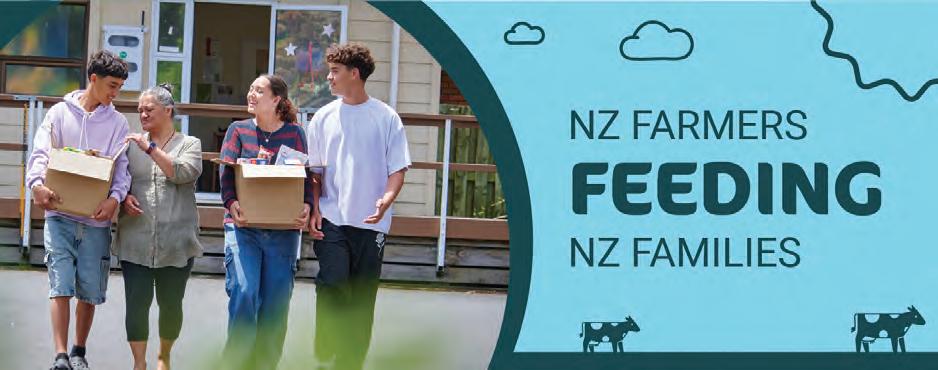
that difference can be lifechanging. One grateful parent said their family had not had meat for months. “We make do with what we can afford and what we get from foodbanks, but we never have meat in our home. Today I fed my family mince pasta bake. It doesn’t seem like much, but to my kids it was a luxury.”
For foodbanks, Meet the Need’s
support brings dignity and nourishment to the families they serve.
Holden says Meet the Need is driven by the belief that no parent should have to choose between paying the bills and feeding their kids.
“The generosity of New Zealand’s farmers and growers is helping make that a reality, but we need more people to get behind this movement.”
For those able to donate livestock, milk or simply funds, every contribution goes directly toward feeding families.
“In tough times, communities pull together,” Holden says. “That’s what Kiwis do best. Together, we can make sure every family has food on the table - because hunger in New Zealand doesn’t always look how you expect it to.”

MEET THE Need, a farmer-led charity, says food insecurity in New Zealand is dire, with one in four children now living in a household experiencing food insecurity, according to Ministry of Health data.
It says thousands of Kiwi families are struggling to put food on the table. In the public sector alone, job cuts have reached approximately 10,000 since late 2023. Combined with record living costs and rising rents, many families who have never needed help before are now turning to foodbanks to get by.
Meet the Need general manager Zellara Holden says behind the statistics are real people.
“Parents are out there working two jobs but still unable to afford a full grocery shop, or families are forced to choose between putting petrol in the car and putting food on the table.
“We’re seeing a growing number of Kiwis, most who never imagined they’d need help, finding themselves at foodbanks for the first time. That’s
why our message is simple – it’s not always who you think.”
Meet the Need connects rural producers with foodbanks and social supermarkets around the country, turning donations of mince and milk into nutritious meals for families who need them most. Every animal donated by a farmer is processed and distributed as premium mince through a national network of foodbanks and community groups. It’s a practical, grassroots way to ensure good Kiwi food stays in Kiwi homes.
But with the cost of living soaring and foodbank demand rising sharply, more donations are needed.
“Foodbanks are under immense pressure right now,” says Holden. “We’ve seen a huge increase in demand as job losses, higher mortgages, and food prices all bite at once. We need more livestock donations from farmers to help us meet that growing need –every animal makes a difference.”
For the families receiving support,

that difference can be lifechanging. One grateful parent said their family had not had meat for months. “We make do with what we can afford and what we get from foodbanks, but we never have meat in our home. Today I fed my family mince pasta bake. It doesn’t seem like much, but to my kids it was a luxury.”
For foodbanks, Meet the Need’s
support brings dignity and nourishment to the families they serve.
Holden says Meet the Need is driven by the belief that no parent should have to choose between paying the bills and feeding their kids.
“The generosity of New Zealand’s farmers and growers is helping make that a reality, but we need more people to get behind this movement.”
For those able to donate livestock, milk or simply funds, every contribution goes directly toward feeding families.
“In tough times, communities pull together,” Holden says. “That’s what Kiwis do best. Together, we can make sure every family has food on the table - because hunger in New Zealand doesn’t always look how you expect it to.”


GRADUATES OF a newly-updated AgriWomen’s Development Trust (AWDT) course are taking more value than ever from the programme, with some even walking away calling themselves the “farm CFO”.
The first group of women to complete AWDT’s refreshed Understanding Your Farming Business (UYFB) course graduated on August 7.
The finance basics of the course have been reviewed and updated – things like cashflow, budgets, understanding accounts and managing risk – but the course now goes well beyond spreadsheets, AWDT general manager Julia Jones says.
Content focused on communication and leadership skills has been added and refined, but the headline change is a new decision-making framework development supported by KPMG insight.
Jones says the timing was right for such an addition – costs are tight, markets are shifting, and commentary can sometimes be distracting.
A clear process for choosing what to do, and why, is worth its weight in gold, she says.
“The redesign was geared to deliver confidence, competence and decisions that stack up.”
Jones says ANZ’s agri-banking team were extremely important in helping AWDT understand the usefulness of the three modules, as well as updating the financial elements of the course to better reflect the changing requirements of the last few years.
“The ANZ team are talking to clients daily, so their ability to provide real-time practical insight was incredibly valuable,” she says.
Beef + Lamb New Zealand also supported the re-vamp, focusing in on the production metric portions and the how to
work through decisionmaking frameworks.
Jones says the Trust’s focus is on building capability that people can use tomorrow, not theory that fades by Friday.
Small cohorts –typically a dozen or so –keep the courses honest and personal, she says, and the UYFB format is workable for busy lives: three in-person days over three months, with online checkins in between to keep momentum.
ANZ managing director of business and agri Lorraine Mapu said it made sense to get in behind the Trust with sponsorship and support.
“Confident, capable women help to build better farming businesses, and stronger communities,” Mapu said.
“Agriculture is a critical part of New Zealand’s economy, so when we build up expertise in the sector like this, it translates into financial wins for the whole country.
“We’re really proud to have backed the Trust since 2011 – almost 15 years now – and many of our own agri specialists have found value in them first-hand.”
ANZ banker Sarah Press completed a threeday strategy, finance and governance module within the Escalator programme in 2019 and described it as “invaluable”.
“The courses offered by AWDT are transformative. They not only develop professional skills but also nurture confidence, connection, and leadership,” Press says.
“For many, hands-on farming experience is abundant, but structured learning provides the insights into financial management, risk assessment, business strategy, and leadership – key areas that aren’t always intuitive from dayto-day operations.
“They also open up nationwide networking and mentorship,
creating a cohort that can be invaluable. It’s a community that continues to inspire well beyond the program itself.”
AWDT offers a
wide range of courses, including UYFB, Next Level, Power Up, Wāhine o te Whenua, It’s All About YOU, and Escalator.


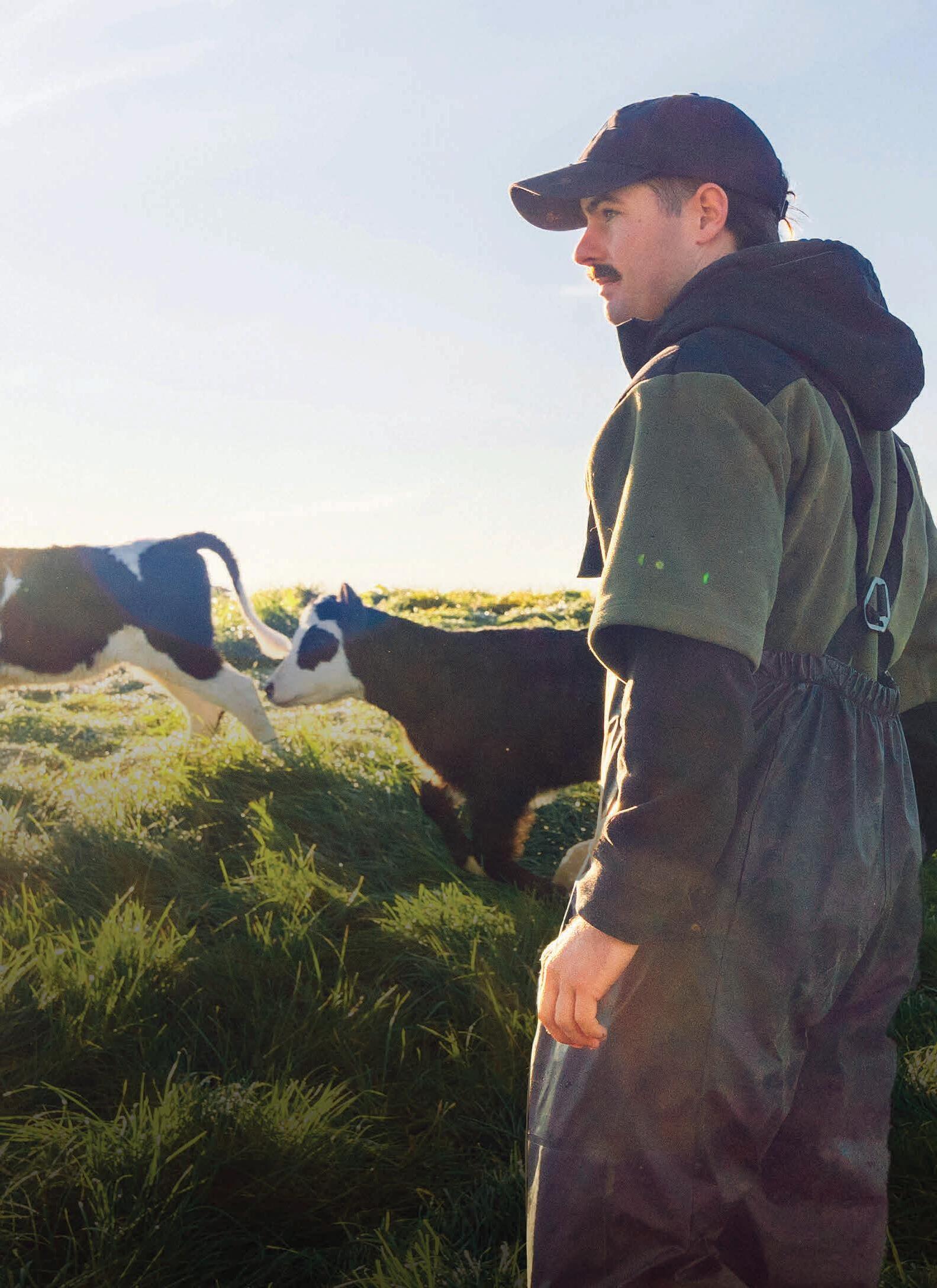
Hardjo is the #1 Lepto serovar infecting people in NZ. Get 12 months proven protection with Ultravac® 7in1. NZ’s only combination clostridial and Lepto vaccine for cattle and sheep.
The risk of Leptospirosis can be minimised through a combination of livestock vaccination, rodent control, biosecurity and hygiene. Consult your local vet to develop a comprehensive Leptospirosis management plan today.

LEO ARGENT
WITH NEARLY two million underutilised dairy calves born annually and the beef price outlook strong, New Zealand’s opportunity to build a scalable dairy-beef system is now.
That’s according to Rabobank’s recently
released ‘Strategic Moment for Dairy-beef in New Zealand’ report. In it, the agribusiness banking specialist says with a potential value over $1.2 billion annually, this represents a strategic crossroads for New Zealand’s agricultural sector.
With global beef demand rising, strong
export prices and tightening global supply are creating a lucrative window for New Zealand to expand its beef footprint.
However, realising this opportunity will require coordinated cross-sector action across breeding, herd rebuilding, rearing and value chain relationships.
“To succeed in developing a well-functioning dairy-beef system and meet evolving consumer and market expectations, collaboration is nonnegotiable,” said report co-author RaboResearch senior animal protein analyst Jen Corkran.
Each year New Zealand’s dairy farms pro-
duce around four million calves, but only 28% are retained as replacement dairy heifers, with just over one quarter of calves born to dairy farmers currently reared as dairybeef.
The remainders are surplus to requirement and often sent for processing at four to five
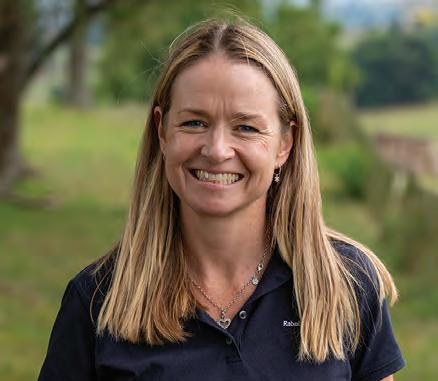
days old. Corkran says herein lies the opportunity to create more value from the almost two million currently underutilised bobby calves.
Silver Fern Farms is pleased to invite current and prospective suppliers and shareholders to our 2025 Plate to Pasture Supplier Roadshows.
Join us for an opportunity to catch up with some of Silver Fern Farms’ directors and executives. We’ll be talking about the markets, company strategy, farmgate outlook, plus an opportunity to have your questions answered directly. We’ll also enjoy a delicious red meat meal.
We hope you’re able to join us. Please RSVP for catering purposes by scanning the QR code, or talk to your local Livestock Representative.
L O C A T I O NV E N U E
A T E
GisbornePoverty Bay Golf Club 14 October 20256pm to 9.30pm
Feilding Feilding Golf Club 15 October 202511am to 2pm
Hawera Hawera Club 20 October 202511am to 2pm
Piopio Fat Owl Bar & Eatery 20 October 20256pm to 9.30pm
Te AwamutuTe Awamutu Golf Club 21 October 202511am to 2pm
Rotorua Rotorua Golf Club 21 October 20256pm to 9.30pm
BlenheimBlenheim Club 22 October 20259.45am to 12.45pm
WhangareiNorthland Events Centre28 October 20256pm to 9.30pm
WaipukurauWaipukurau Golf Club 29 October 202511am to 2pm
MastertonCopthorne Hotel Solway Park29 October 20256pm to 9.30pm
Little RiverBanks Peninsula Rugby Club11 November 202511am to 2pm
Cheviot Cheviot Trust Hotel 11 November 20256pm to 9.30pm
Kurow Kurow Golf Club 12 November 202511am to 2pm
Pleasant PointPleasant Point Golf Club12 November 20256pm to 9.30pm
Winton Winton War Memorial Hall26 November 20256pm to 9.30pm
Gore Croydon Lodge 27 November 202511am to 2pm
BalcluthaCross Recreation Centre27 November 20256pm to 9.30pm
Clyde Clyde Bowling Club 28 November 202511am to 2pm

or register online at https://silverfernfarms.eventsair.com/ 2025-supplier-roadshows/2025sr/Site/Register
“At current average market prices for the 2024/25 export season, rearing an additional 600,000 surplus calves could unlock over $1.2 billion in value.”
With the bulk of New Zealand’s dairy herd having an early spring calving pattern to match the herd’s feed demand with peak pasture growth, most dairy calves are born within a six-week period prior to October.
Corkran explained while this system is efficient for milk production, it creates a concentrated calving window that can limit the capacity to rear all dairy calves born; a structural constraint that is a key component in New Zealand’s dairy-beef challenge.
Beyond being an economic imperative, Corkran said the issue is also a reputational one, with a more integrated dairybeef system protecting New Zealand’s global brand and social licence whilst futureproofing the livestock sector.
“RaboResearch sees value in exploring the concept of a national dairy-beef breeding strategy. This idea would benefit from a pan-sector approach, supported by robust data and aligned with economic, genetic and environmental objectives.
“With broader industry engagement and the right support, including potential funding through MPI’s Primary Sector Growth Fund, this concept could help unlock significant progress across the sector.”
With breeding deci-
sions made at the start of the dairy-beef value chain having impacts on quality and profitability down the line, a more strategic approach to breeding considering genetics used and time of reproduction can unlock significant value without needing to overhaul the entire dairy herd.
With risk reallocation across the value chain an important driver in the creation of a profitable dairy-beef system, Corkran highlights the use of traceability systems like wearable technology and calf ‘passports’. These could target essential dairy traits like shorter gestation and calving ease while tracking calves through ownership changes.
With rearers often carrying disproportionate risk, models such as performance-based management fees or fixed-price contracts from insemination with premiums tied to growth could provide financial certainty. Meanwhile, a rapid feedback loop between genetics providers and end users would help ensure breeding decisions remain commercially viable.
The report says the strategy utilised by government-owned farming enterprise Pāmu may offer a blueprint for integrating dairy and beef systems across the country at scale.
Pāmu, which first began rearing dairy-beef calves in 2016, reared 69% of all calves born in the 2025 fiscal year. With plans to rear 10,500 calves annually by 2026–2027, full implementation is targeted across all 42 dairy farms – milking 40,000 cows – and rearing 100% of calves by the end of the decade.
Delivering a complete suite of crop protection solutions for today’s forage brassica growers.
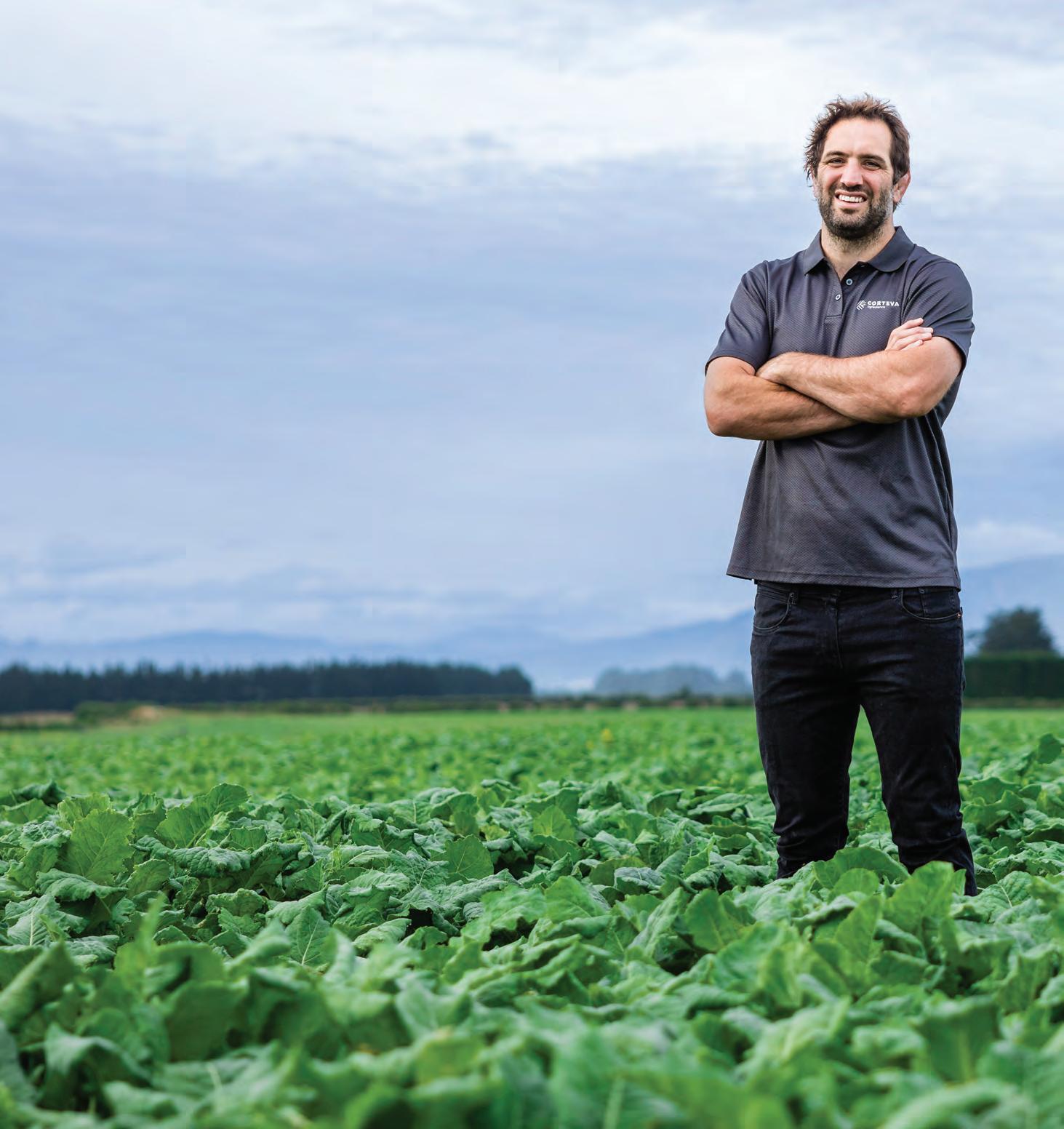
Our portfolio of powerful, proven products has helped farmers from one end of the country to the other create and maintain thriving businesses, and has earned us a reputation as New Zealand’s brassica protection specialists. With every product suitable for ground or aerial application, our suite of herbicides and insecticides provides local farmers with everything they need to win the war on pests and weeds.

Visit corteva.co.nz to view our range of online brassica resources.
This is the third in a series of articles from Beef + Lamb New Zealand's Informing New Zealand Beef programme. The seven-year INZB partnership, supported by Beef+Lamb New Zealand and the Ministry for Primary Industries' Sustainable Food and Fibre Futures fund, aims to boost the sector's profits by $460m.
FOCUSED ON increasing the use of high-quality genetics in the beef industry, the four main components of the programme are developing New Zealand-specific breeding indexes, supporting the development of an across breed genetic evaluation and development of data infrastructure, running a beef progeny test and linking in data from commercial herds.
Cow body condition score is one of the key factors to manage throughout the farming calendar. A breeding cow with a bit of spare energy stacked on her back is more productive, more robust, and better-looking. But where does genetics come into all this?
Could your bulls be working harder to produce full-bodied bovine goddesses of fertility?
Right now, there are no body
condition score (BCS) breeding values calculated for most kiwi bulls. But outcomes from the B+LNZ Genetics
Beef Progeny Test have shown that there could be.
Over 240 sires have been assessed for cow BCS in the B+LNZ Genetics
Beef Progeny Test and more than 4,500 cows have had their BCS measured at three time points: prior to mating, at weaning and prior to calving. There was quite a range of average cow BCS scores between sires (graph below).
The heritability of cow BCS was 0.26 indicating that around 26% of variation in cow chunkiness can be attributed to genetics. So, there is plenty of opportunity to add extra love-handles to your herd via bull selection.
The researchers also looked at related traits. There was a genetic
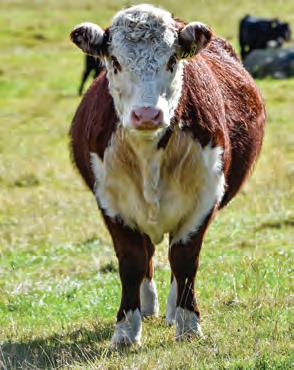
correlation between cow BCS and the existing rib fat depth trait (measured via ultrasound in finishing animals).
Bulls with a higher genetic merit for
rib fat depth tended to have daughters with higher cow BCS. However, the genetic correlation (0.29) was not strong enough to consider rib fat depth a good predictor for cow BCS on its own.
This means that rib fat depth EBVs only explains 8% of the variation in
cow BCS. Likewise for the eye muscle area trait (4%). And since rib fat depth and eye muscle area are measured in finishing animals which don’t have the demands of calving and lactating, there is a case to be made for adding a dedicated cow BCS breeding value to future genetic evaluations.
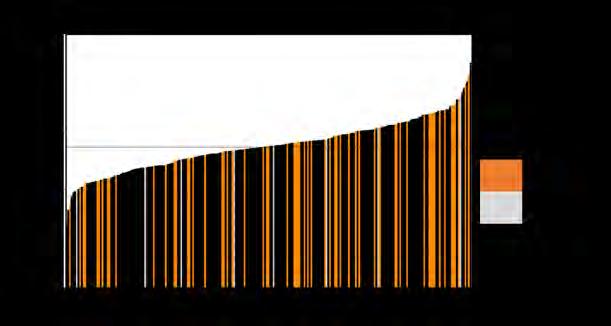







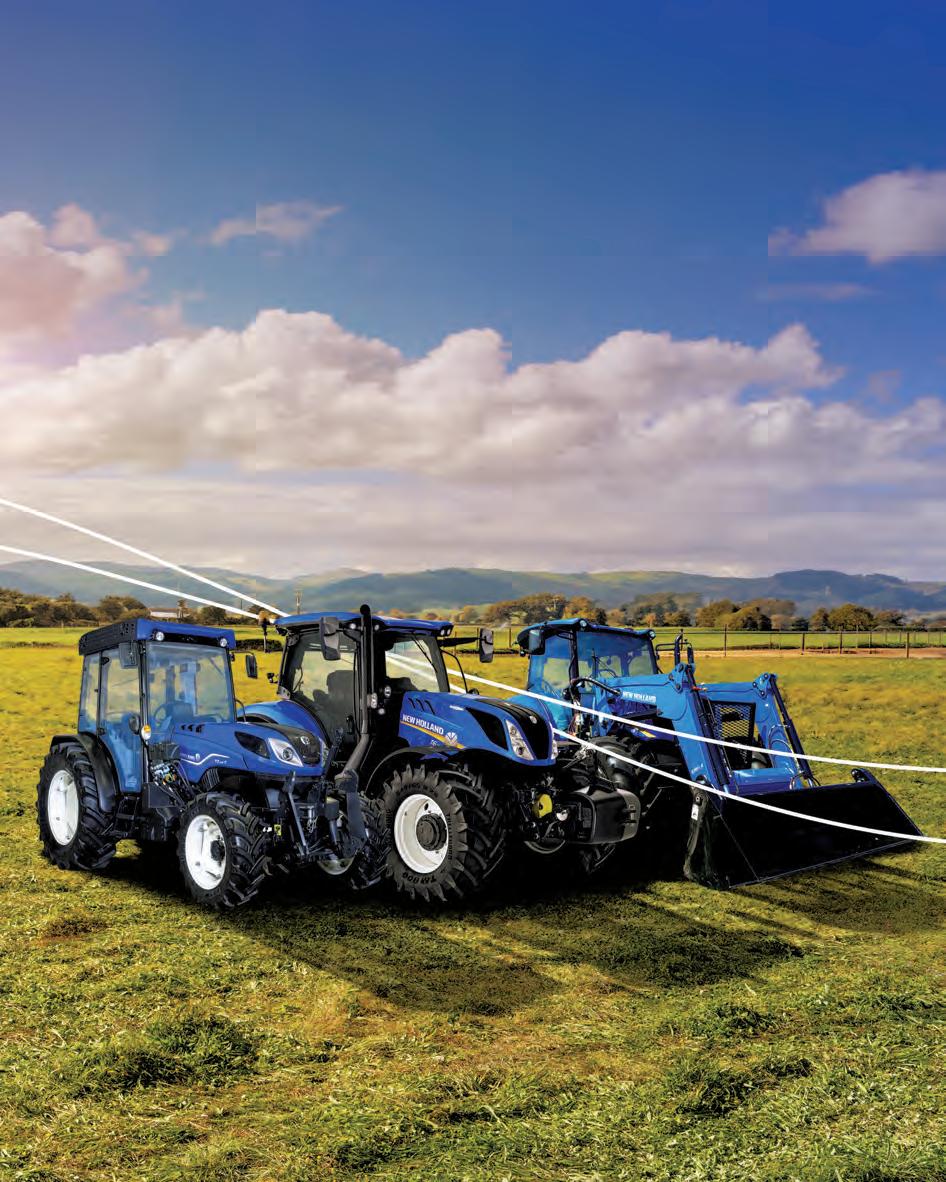
KATHY DAVIS
IF GROWING more feed at home adds up to $428 profit per tonne of dry matter to your bottom line, wouldn’t it be good to have a ryegrass that gets you there quicker?
That dollar figure is a key takeaway from years of landmark industry research on emissions and profitability in New Zealand dairy farming. Emissions and Profitability is a joint project between DairyNZ, Fonterra and LIC that used data from 8000 NZ farms to analyse the relationship between greenhouse gas emissions and farm profitability.
And now’s a perfect time for some farmers to start making it a reality, says pasture expert Graham Kerr, Barenbrug.
“Spring pasture renewal is a great way to improve and strengthen your farm business in summer safe or irrigated areas. And thanks to this study, for the first time we now have data available which reveal exactly how much this can be worth to you in both profitability, and emissions intensity.
“If that’s not a golden opportunity to set yourself up for the future with what grass you pick for spring renewal, I don’t know what is.”
He urges farmers to explore all ryegrass seed options available before they renew this season, rather than opt for the status quo or whatever cultivar their rep suggests.
“There are a lot of good perennial ryegrasses
out there,” Graham says. “But what you want is an exceptional ryegrass, and Array is in a class of its own. If you haven’t heard of it yet, it’s time to ask your rep about it.”
Array NEA2 combines unbeaten yield with several other factors that align directly with the emissions and profitability research findings.
These include persistence, high intake, feed quality and nitrogen use efficiency.
“Get the right seed genetics, or you’re missing out on pasture that not only reduces your emissions intensity, but makes you more money.”
The big study found the best performing farms in terms of both emissions intensity and
profitability had three things in common.
They all grew more feed, of higher quality, with more efficient use of nitrogen, than the others.
Array NEA2 is the highest yielding perennial ryegrass Barenbrug has bred, and it achieves this under the same inputs, in the same soils, as its peers, the company says.
The exciting thing for farmers is that Array really stands out when there’s a nitrogen deficiency, Graham says.
This is a benefit during periods of low soil nitrogen, for example after periods of heavy rain, or leading into a hot or dry spell, when the organic matter cycle slows down and nitrogen levels drop.
Combined with ample cool season growth,
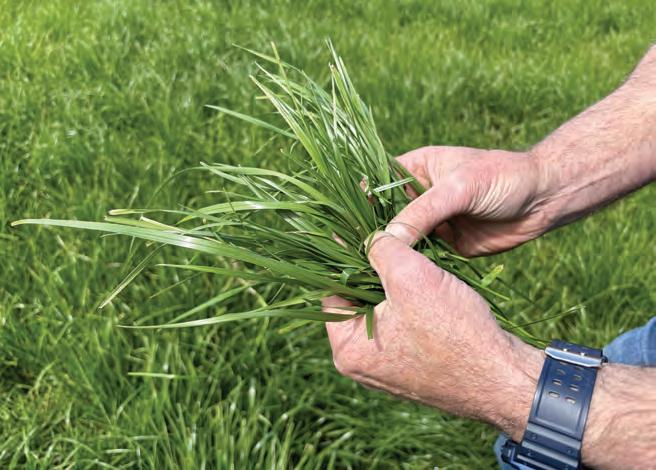
very late flowering, high feed quality, strong persistence and an upright, easy to eat structure, Array’s yield and nitrogen uptake set it apart from other diploid perennial ryegrasses currently
available.
“The industry study has proved that cutting greenhouse gas emissions doesn’t reduce dairy farm profitability. The next step for many farmers will be working out how best to implement these
findings on their own properties, if they haven’t already.
“We believe Array is tailor-made for this opportunity.”
Seed for Array is available now from retailers.

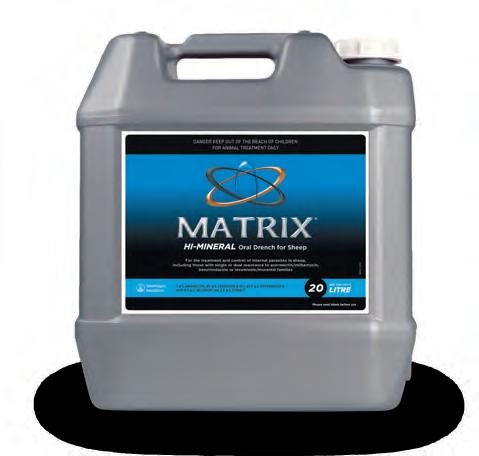
MARK DANIEL markd@ruralnews.co.nz
THE CLIMATE of uncertainty and market fragmentation that currently characterises the global economy suggests that many of the European agricultural machinery manufacturers will be looking for new markets.
The issues are strongly reflected in Italian machinery exports, which after an overall decline in 2024 of 15%, also show negative figures for the first half of this year, with a fall of 10.4% reported by industry association FederUnacoma.
The decline in
exports to the US market was extremely sharp, where “Made in Italy” technologies were affected by the Trumpimposed tariffs and fell 42.4% in the first half of the year (year on year) - moving from € 480 to €276 million.
“The current American administration’s poli-
cies,” said FederUnacoma President Mariateresa Maschio, “are severely detrimental to our sector, which last year counted the United States as its primary export market accounting for 14% of our total exports.”
The demand primarily focused on tractors, construction machinery,
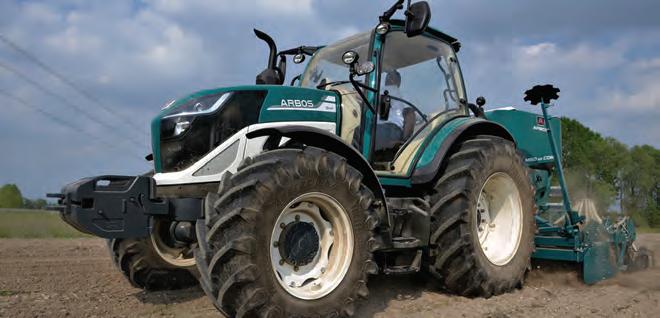

specialised crop equipment, as well as irrigation and haymaking equipment.
“These new commercial structures are encouraging our companies to seek outlets in those countries experiencing a developing agricultural economy, so encountering growing demand for machinery, such as Indonesia, Thailand, Vietnam, and the Philippines,” added Maschio.
The Italian agricultural machinery industry is typically a key supplier for the Mediterranean countries, which despite the 10.4% drop in global supply was showing resilience with a more limited decline of only 3%.
Indeed, Italy is currently the main supplier of agricultural machinery to countries such as Albania, Greece, Turkey, Israel, and Tunisia, and the second largest to France, Slovenia, Bulgaria, Jordan, Lebanon, Algeria, Libya, and Morocco.
Italy also ranks third in supplies to Spain, Hungary, Croatia, and Serbia, with the value of Italian exports to the Mediterranean region growing by 15%, from EUR 1.93 to 2.21 billion, between 2021 and 2024, accounting for 36.2% of the total value of exports
in the sector.
While the Mediterranean region continues to appear promising, North Africa and sub-Saharan Africa appear to have even greater potential as demand for technology grows. The African continent is experiencing huge demographic growth, likely to reach 2.5 billion inhabitants by 2050, who are already unable to ensure food security for its current population.
Food imports to Africa, which have been around US$ 35 billion a year in recent years, are expected to jump to US$110 billion by the end of 2025.
“In the near future, demand for food will also grow in qualitative terms, due to the emergence of a middle class with more advanced consumption styles and greater spending power,” Mariateresa Maschio said.
“Mechanisation is required not only to increase productivity, preserve natural resources, and optimise water consumption, but also to streamline the entire supply chain, including transport, preservation, and initial processing of products.”


MARK DANIEL markd@ruralnews.co.nz
WHILE THE Krone Big M has set the standard for many years, sources close to Rural News , with an ear to the ground and a periscope to see over high hedges, tell us that German transport and effluent specialist Fliegl has plans to move into the sector, having recently acquired rights to the Cutaro SR 1100 self-propelled triple mower developed by Swiss company ARB-Tec.
First seen in 2022, the cutting width of up to 11m sees the mowers and conditioning units moving away from the norm by being hydraulically driven. Weighing in at only 8.5 tonnes, power is delivered by a 350hp Mercedes engine.
Rural News understands the Cutaro will be built at the same Kirchdorf plant where Fliegl manufactures the Cargos forage wagons and farm loaders. We also understand there are plans to redesign the drive unit to reduce the overall transport width from by Claas. Fliegl is yet to release a timescale for
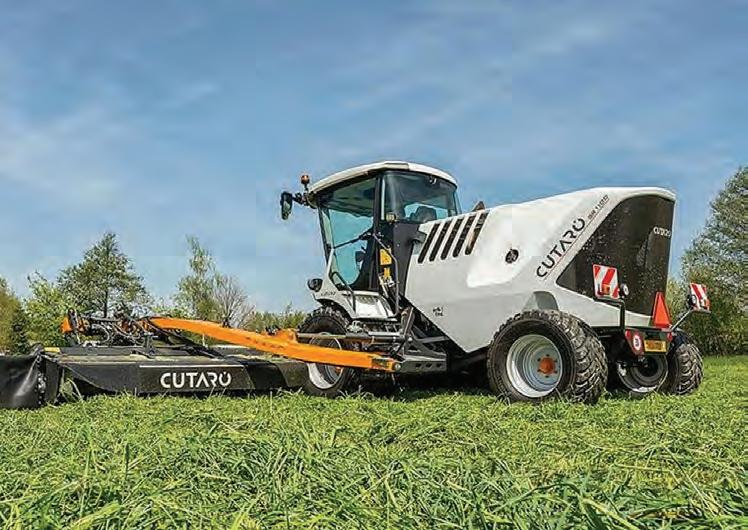
of pre-production machines, for testing in Europe during 2026, alongside prototypes for

MARK DANIEL markd@ruralnews.co.nz
KUBOTA HAS announced plans to start field testing the autonomous hydrogen powered fuel cell tractor it recently unveiled at Expo 25 in Osaka Japan.
The concept vehicle uses a fuel cell supplied with compressed hydrogen, stored in dual tanks below the hood, with the electricity generated powering two electric motors - one powering the wheels, the second driving the PTO system.
Offering the ability to operate via remote control, the vehicle is 4.4m long x 2.3m high x 2.2m wide – a similar size to a standard agricultural tractor.
Regarding endurance, Kubota reports that the hydrogen tanks offer enough capacity to allow the tractor to work for half a day, with performance similar to that of a conventional 100hp tractor.
The field testing will be used to verify these claims, alongside a focus on unmanned operation, efficient refuelling and research to confirm the fuel cell configuration can match the performance and reliability of a diesel-powered tractor.

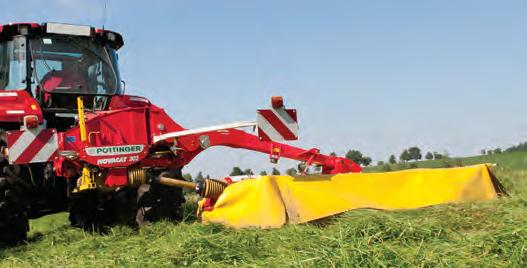

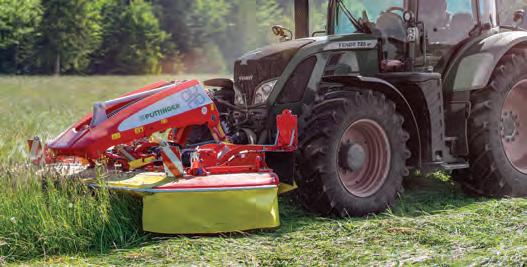
MARK DANIEL
markd@ruralnews.co.nz
CURRENTLY
AVAILABLE in New
Zealand in 250, 270, 300 and 400 horsepower options, Case IH’s Optum Series is being readied for expansion with the announcement of three new additional models, the 360, 390 and 440. Said to be completely new, apart from the cabin, the company appears to have recognised that while the Magnum Series offering 310, 340, 380, and 400hp is an extremely capable prime mover –especially for cultivation – farmers and contractors are asking for a more road friendly, versatile workhorse.
While the new series has a longer wheelbase than Magnum (it is 100mm shorter overall),
the project, started in 2021, was to build a lighter, more compact, faster vehicle, also more suited to working with front-mounted kit.
Up front, a new independent front suspension layout uses a CNH axle which offers anti-roll, pitch and dive alongside 250mm of travel. The axle incorporates the brakes from the rear end of a Maxxum, for increased stopping power, while the exhaust brake (offering about 28% braking effect) has been complemented by a decompression system on the engine, that opens valves, rather than allowing the exhaust gas pressure to push the piston down, which results in 166% braking.
Rather than using a chassis, the sump of the 8.7-litre, six-cylinder FPT Cursor 9 engine
forms the structural component, reducing weight, but also helping the bigger Optums turn in a 14.5m circle.
Both SCR and a DOC are used for Stage 5 emissions, with service intervals at 750 hours to tie in with the 1500 hours transmission and hydraulic system intervals.
Equipped with a larger version of the 4×2 CVXDrive box found in the existing Optum, one key difference is the ability to travel at 60km/h at 1900rpm, depending on local regulations.
The bigger Optums are available with larger tyre options, with the option of a central tyre inflation system, using a gear driven compressor, capable of delivering one bar inflation in five minutes. The system offers two field and one
road pressure settings. Working weight of the flagship Optum 440 is around 12,450kg with a max permissible weight of 19 tonnes (depending on local markets).
At the business end of the tractor, rear pto speeds are offered with 540E/1000 or 1000/1000E formats, while the front pto is also a two-speed 1000/1000E unit. Rear hydraulics are 220 l/ min output as standard, with the option of an additional 140 litre/min pump for a total output of 360l/min. With the twin pump arrangement, one supplies oil to the left side couplers, the other for the right. The layout allows one pump to be high pressure, the other low pressure as required.
Although offering the same structure, cabins have been upgraded
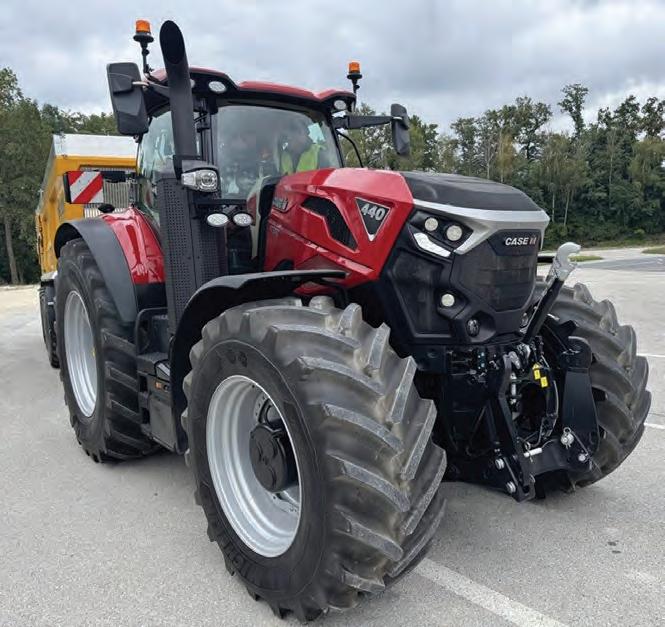
to include suspension options and other improvements such as walk-in entry steps, integrated toolbox
Just north of Burnham, Canterbury is Grange Road where grower Patrick Bell farms 250 hectares. Their investment into centre pivot irrigation has changed their farming efficiency and they can now grow a greater range of crops with better yields.
“In Dad’s day, he was dry land farming. He eventually got to put Rota Rainers on, but in the last four years, we’ve put pivots on and that’s really upped our efficiency,” explains Patrick.
Of course, with more irrigation come more challenges with weed control, so when KWS approached Patrick in 2020 about trialling their new CONVISO® SMART System, (herbicide tolerant beet system) they were all ears.
The fewer weeds, the better the yield. What attracted Patrick to the CONVISO SMART System was the ability to put in a crop of sugarbeet
and knock broadleaves, thistles and grasses in one go.
“The fewer the weeds, the better the yield – there’s less competition for your crop. So, with CONVISO, there’s less spray applications. You’re not paying a spraying contractor and there’s less chemicals going on the paddock. It’s got to be good, doesn’t it?” says Patrick.
Patrick also likes the fact that he can get the CONVISO crop in the ground earlier. The sooner the crop can come off, the sooner Patrick can get back into wheat.
“CONVISO is saving us a lot of time, which means more time for other stuff – like spending time with the family, which is important to me.”
storage, and a built-in water tank hand-washing. Production is expected to commence in mid-2026, although
SCAN TO LEARN MORE ABOUT PATRICK BELL
at this stage, pricing and availability are yet to be confirmed for ANZ.
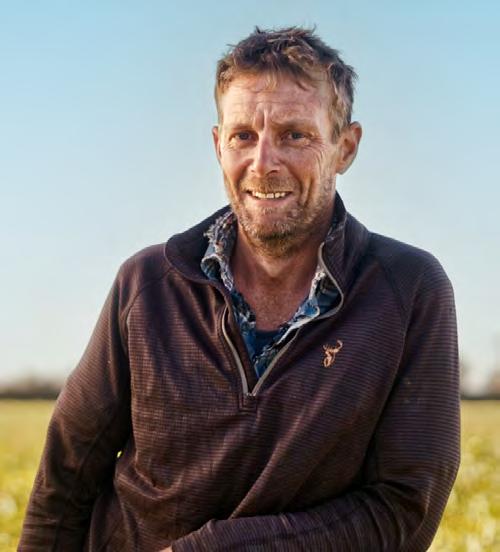

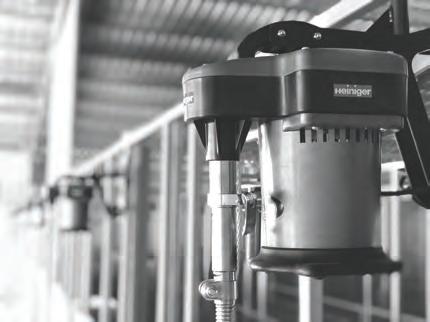



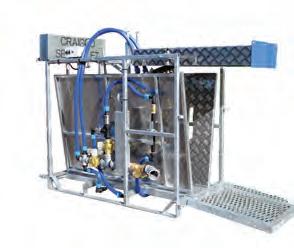



















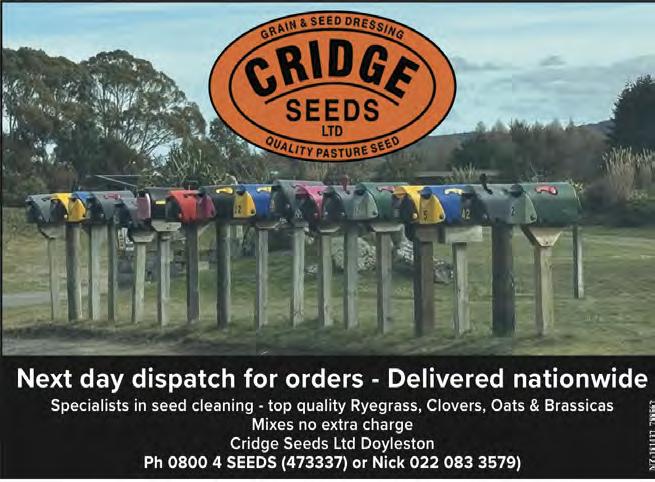




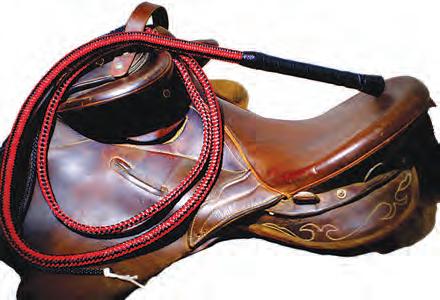

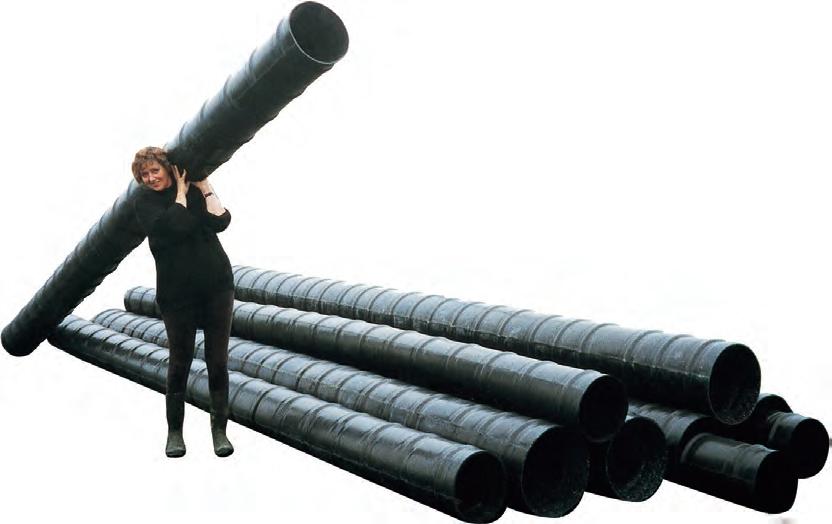

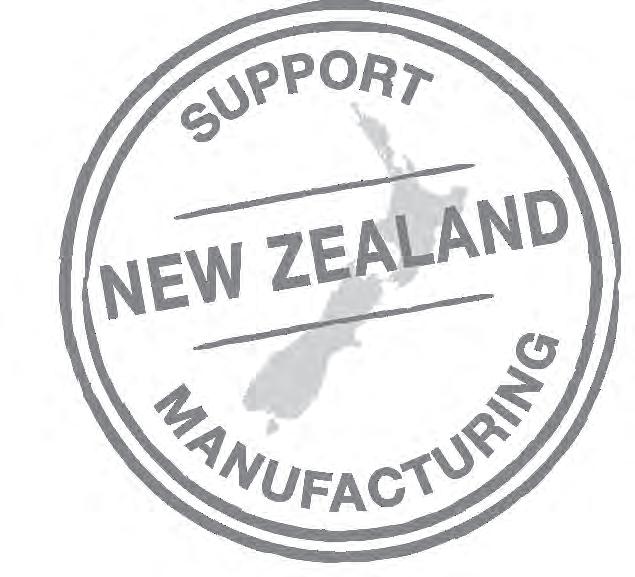

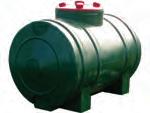
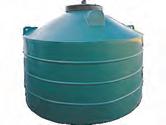
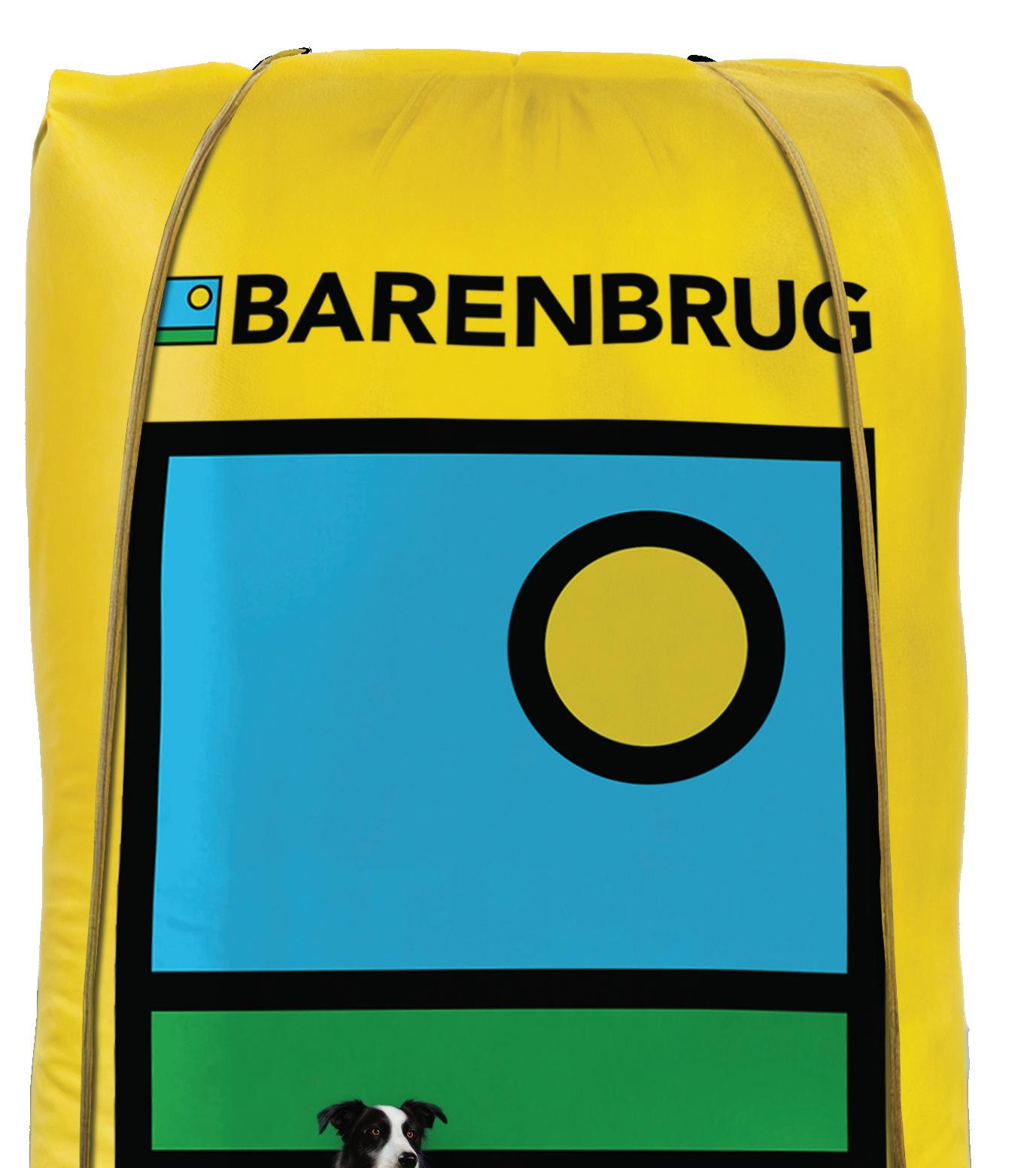

Perennial
The next generation Perennial legend with NEA4 and now with NEA12 for superior persistence and summer growth. Maxsyn
ryegrass.
Perennial
The superstar perennial, delivering high intake, Yield, N uptake and persistence. The diploid of the future! Array
The benchmark in tetraploid perennials. Grows longer, is good for the environment and animals love it. 4front Perennial
Forge 3-5 years
The phenomenal 3-5 year pasture. With environmental benefits, delivers performance your neighbours will envy.
Shogun 1-3 years
The outstanding hybrid, still setting the standard for 1-3 year pasture. Available with NEA and supercharged NEA12.
